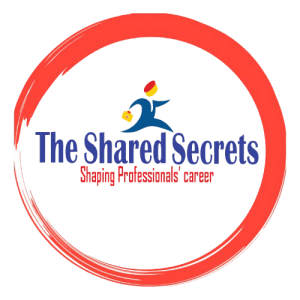In 2024, LinkedIn remains a powerful tool for job seekers, recruiters, and professionals. With the platform’s continuous growth, standing out requires strategic optimization. This comprehensive guide will help you enhance your LinkedIn profile, ensuring it not only attracts attention but also converts that attention into meaningful career opportunities. Let’s discuss about Top Strategies to Optimize Your LinkedIn Profile for Maximum Visibility.
1. Craft a Compelling Headline
Your LinkedIn headline is more than just a job title; it’s your first impression. A compelling headline should reflect your professional identity, key skills, and what makes you unique in your field.
Tips for Crafting Your Headline:
- Be Specific: Instead of just “Marketing Manager,” consider something like “Digital Marketing Manager | Specializing in SEO & Content Strategy.”
- Use Action Words: Words like “Driving,” “Leading,” or “Innovating” can make your headline more dynamic.
- Incorporate Keywords: Research industry-relevant keywords and include them naturally in your headline. This enhances your profile’s visibility in search results.
A strong headline not only grabs attention but also improves your chances of appearing in recruiter searches. For example, adding specific terms like “SEO Specialist” or “Data-Driven Marketer” can align your profile with the roles you’re targeting.
2. Optimize Your Profile Picture and Background Image
Your profile picture is a crucial element of your LinkedIn profile. It’s the visual representation of you, and it must convey professionalism, confidence, and approachability.
Profile Picture Best Practices:
- High-Quality Image: Use a clear, high-resolution headshot. Your face should occupy about 60% of the frame.
- Dress Professionally: Wear attire that matches your industry’s standards. For example, a suit for finance professionals or business casual for tech industries.
- Smile: A friendly smile can make you appear more approachable.
Background Image:
- Reinforce Your Brand: Use your background image to reinforce your personal brand. This could be an image related to your field, like a cityscape for urban planners or a laptop and coffee for content creators.
- Custom Design: If possible, create a custom background image that includes your brand colors or tagline.
Your visual presentation on LinkedIn sets the tone for how others perceive you. It’s worth investing time in creating a polished, professional appearance that aligns with your career goals.
3. Write an Engaging About Section
The About section is where you can dive deeper into your story. It’s your opportunity to share what drives you, what you’ve accomplished, and what you’re passionate about.
How to Structure Your About Section:
- Start with a Strong Opening: Your first sentence should grab the reader’s attention. For instance, “As a seasoned project manager, I thrive in fast-paced environments where innovation meets execution.”
- Highlight Key Achievements: Mention the highlights of your career. Use specific examples, such as “Managed a $2M budget project that delivered a 15% ROI within six months.”
- Include Relevant Keywords: Seamlessly integrate industry-specific keywords that recruiters might search for. For example, if you’re in IT, terms like “cloud computing” or “cybersecurity” should be included.
- End with a Call to Action: Encourage readers to connect with you. A simple, “Let’s connect to discuss how I can bring value to your team,” can be very effective.
The About section should provide a clear narrative of your professional journey. Keep it focused, engaging, and relevant to your target audience.
4. Highlight Your Experience and Achievements
The Experience section should tell the story of your career progression, focusing on the impact you’ve had in each role. Rather than just listing responsibilities, emphasize what you’ve achieved.
Key Points to Include:
- Use Bullet Points for Clarity: Break down your roles into easy-to-read bullet points. Start each point with an action verb like “Led,” “Developed,” or “Improved.”
- Quantify Achievements: Whenever possible, include numbers to back up your accomplishments. For example, “Increased client retention by 25% through targeted marketing campaigns.”
- Tailor Descriptions: Customize your descriptions to include keywords relevant to your industry. This not only improves your profile’s SEO but also resonates with recruiters.
For example, if you’re a sales professional, you might include: “Exceeded quarterly sales targets by 30% through the development of a new customer referral program.”
5. Add Relevant Skills and Endorsements
LinkedIn’s skills section is crucial for showcasing your areas of expertise. Endorsements from colleagues and connections further validate these skills.
Optimizing the Skills Section:
- Prioritize Important Skills: Add up to 50 skills, but make sure the top three are your most relevant. These are the ones that appear prominently on your profile.
- Seek Endorsements: Reach out to past colleagues, supervisors, or clients for endorsements. The more endorsements you have for a particular skill, the more credible it appears.
- Regular Updates: As your career progresses, add new skills and remove outdated ones. Keeping this section current helps match your profile with the latest job opportunities.
For instance, if you’re in digital marketing, skills like “SEO,” “Google Analytics,” and “Content Marketing” should be featured prominently.
6. Engage with Content and Grow Your Network
LinkedIn rewards active users. Engaging with content not only increases your profile’s visibility but also positions you as an active participant in your industry.
Strategies for Engagement:
- Share Valuable Content: Regularly share articles, blog posts, or industry news that your network will find valuable. Add your insights to spark discussions.
- Comment Thoughtfully: Leave meaningful comments on posts by others. This can help you build relationships and increase your visibility.
- Expand Your Network: Don’t hesitate to send connection requests to industry peers, recruiters, and professionals you meet at events. A diverse network increases your exposure to potential opportunities.
Engaging with content consistently builds your presence on LinkedIn and can lead to new connections and opportunities.
7. Leverage LinkedIn Recommendations
Recommendations are powerful testimonials that can set you apart from other candidates. They provide social proof of your skills, work ethic, and achievements.
How to Obtain Quality Recommendations:
- Choose Wisely: Ask for recommendations from people who can speak to your professional abilities. This could be a former manager, a client, or a colleague.
- Be Specific: When requesting a recommendation, guide the writer by mentioning specific projects or skills you’d like them to highlight.
- Write Recommendations for Others: A good way to receive recommendations is to give them. Write thoughtful recommendations for your connections, and many will reciprocate.
For example, a recommendation might say, “Jane consistently exceeded expectations in her role as Project Manager, delivering projects on time and under budget, while fostering team collaboration.”
8. Utilize LinkedIn’s Featured Section
The Featured section is a highly visible area where you can showcase your best work. It’s an excellent way to highlight your professional accomplishments.
What to Feature:
- Articles and Blog Posts: If you’ve written any articles or blog posts, feature them here to demonstrate your expertise.
- Presentations and Projects: Showcase any presentations or projects that you’re proud of. This could include anything from a successful marketing campaign to a research project.
- Portfolio Work: If you’re in a creative field, use this space to highlight your best work, such as design portfolios, videos, or other multimedia content.
The Featured section is a dynamic space that can be regularly updated as you complete new projects or achieve new milestones.
9. Regularly Update Your Profile
Your LinkedIn profile should be a living document that evolves with your career. An outdated profile can make you appear disengaged or irrelevant. Regularly update it with new skills, certifications, or job experiences to stay relevant.
Best Practices for Regular Updates:
- Add New Skills: As you gain new skills or certifications, add them to your profile immediately.
- Update Job Roles and Descriptions: When you take on new responsibilities or switch roles, reflect these changes on your profile.
- Showcase Recent Achievements: Regularly update the Experience section with your latest accomplishments. This keeps your profile fresh and relevant.
For example, if you recently completed a certification in data analysis, add this to your License & Certification section, Skills section and update your About section to reflect your new expertise.
10. Join and Participate in LinkedIn Groups
LinkedIn Groups offer a valuable opportunity to connect with professionals in your field, stay updated on industry trends, and increase your profile’s visibility.
Getting the Most Out of LinkedIn Groups:
- Join Industry-Specific Groups: Search for and join groups that align with your career interests and goals. These could be groups focused on digital marketing, software development, or leadership.
- Participate Actively: Engage in discussions, share relevant content, and connect with other group members. Active participation can lead to new connections and increased visibility.
- Network Within the Group: Use group memberships to network with professionals who share your interests. This can lead to valuable connections and opportunities.
For instance, if you’re in human resources, joining a group like “HR Professionals” can keep you informed on the latest trends and connect you with like-minded professionals.
Conclusion
The more you invest in your LinkedIn presence, the more it will pay off in career growth and opportunities. Optimizing your LinkedIn profile is not just about standing out; it’s about creating opportunities. In 2024, a well-optimized LinkedIn profile can significantly impact your career trajectory. By following these strategies—crafting a compelling headline, optimizing your visuals, writing an engaging About section, highlighting your achievements, and actively engaging with your network—you can maximize your LinkedIn visibility and attract the right opportunities.

